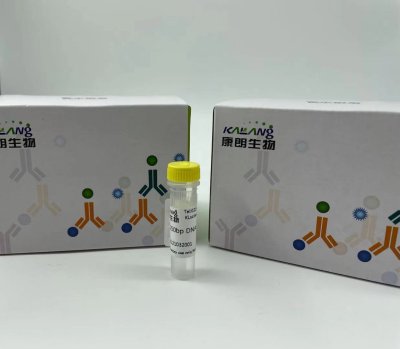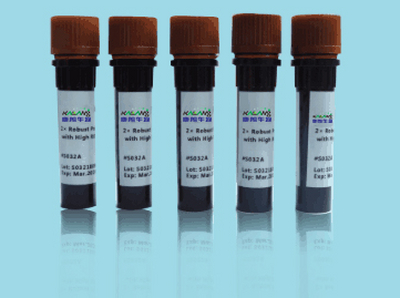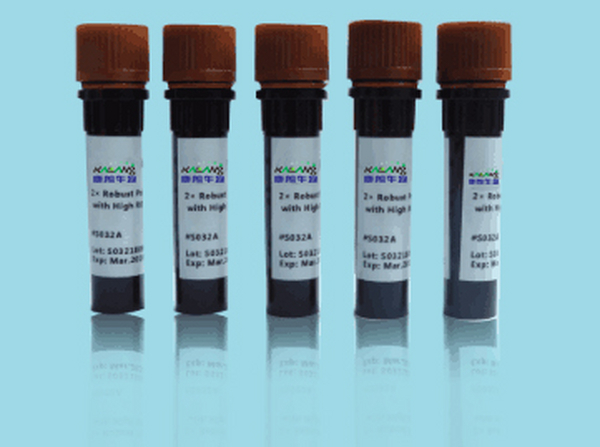QQ:3002763590


客服电话:021-61998208
Epac rabbit Polyclonal Antibody
Epac抗体
Epac抗体应用:Western Blot: 1/500 - 1/2000. ELISA: 1/40000. caution:It is uncertain whether Met-1 or Met-43 is the initiator.,domain:The DEP domain is involved in membrane localization independent from regulation by cAMP.,function:Guanine nucleotide exchange factor (GEF) for RAP1A and RAP2A small GTPases that is activated by binding cAMP.,similarity:Contains 1 cyclic nucleotide-binding domain.,similarity:Contains 1 DEP domain.,similarity:Contains 1 N-terminal Ras-GEF domain.,similarity:Contains 1 Ras-GEF domain.,tissue specificity:Widely expressed with highest levels in adult kidney, heart, thyroid and brain, and fetal kidney.,
EPAS-1 rabbit Polyclonal Antibody
EPAS-1抗体
EPAS-1抗体应用:IF: 1:50-200 Western Blot: 1/500 - 1/2000. IHC-p: 1/100-1/300. ELISA: 1/20000. endothelial PAS domain protein 1(EPAS1) Homo sapiens This gene encodes a transcription factor involved in the induction of genes regulated by oxygen, which is induced as oxygen levels fall. The encoded protein contains a basic-helix-loop-helix domain protein dimerization domain as well as a domain found in proteins in signal transduction pathways which respond to oxygen levels. Mutations in this gene are associated with erythrocytosis familial type 4. [provided by RefSeq, Nov 2009],
EP-CAM rabbit Polyclonal Antibody
EP-CAM抗体
EP-CAM抗体应用:Western Blot: 1/500 - 1/2000. Immunofluorescence: 1/200 - 1/1000. ELISA: 1/5000. epithelial cell adhesion molecule(EPCAM) Homo sapiens This gene encodes a carcinoma-associated antigen and is a member of a family that includes at least two type I membrane proteins. This antigen is expressed on most normal epithelial cells and gastrointestinal carcinomas and functions as a homotypic calcium-independent cell adhesion molecule. The antigen is being used as a target for immunotherapy treatment of human carcinomas. Mutations in this gene result in congenital tufting enteropathy. [provided by RefSeq, Dec 2008],
EP-CAM rabbit Polyclonal Antibody
EP-CAM抗体
EP-CAM抗体应用:Western Blot: 1/500 - 1/2000. ELISA: 1/10000 epithelial cell adhesion molecule(EPCAM) Homo sapiens This gene encodes a carcinoma-associated antigen and is a member of a family that includes at least two type I membrane proteins. This antigen is expressed on most normal epithelial cells and gastrointestinal carcinomas and functions as a homotypic calcium-independent cell adhesion molecule. The antigen is being used as a target for immunotherapy treatment of human carcinomas. Mutations in this gene result in congenital tufting enteropathy. [provided by RefSeq, Dec 2008],
EPG5 rabbit Polyclonal Antibody
EPG5抗体
EPG5抗体应用:IHC-p 1:50-200, ELISA 1:10000-20000 ectopic P-granules autophagy protein 5 homolog(EPG5) Homo sapiens This gene encodes a large coiled coil domain-containing protein that functions in autophagy during starvation conditions. Mutations in this gene cause Vici syndrome. [provided by RefSeq, Aug 2015],
EphA1 rabbit Polyclonal Antibody
EphA1 抗体
EphA1 抗体应用:Western Blot: 1/500 - 1/2000. Immunohistochemistry: 1/100 - 1/300. Immunofluorescence: 1/200 - 1/1000. ELISA: 1/20000. EPH receptor A1(EPHA1) Homo sapiens This gene belongs to the ephrin receptor subfamily of the protein-tyrosine kinase family. EPH and EPH-related receptors have been implicated in mediating developmental events, particularly in the nervous system. Receptors in the EPH subfamily typically have a single kinase domain and an extracellular region containing a Cys-rich domain and 2 fibronectin type III repeats. The ephrin receptors are divided into 2 groups based on the similarity of their extracellular domain sequences and their affinities for binding ephrin-A and ephrin-B ligands. This gene is expressed in some human cancer cell lines and has been implicated in carcinogenesis. [provided by RefSeq, Jul 2008],
EphA10 rabbit Polyclonal Antibody
EphA10抗体
EphA10抗体应用:Western Blot: 1/500 - 1/2000. ELISA: 1/40000. EPH receptor A10(EPHA10) Homo sapiens Ephrin receptors, the largest subfamily of receptor tyrosine kinases (RTKs), and their ephrin ligands are important mediators of cell-cell communication regulating cell attachment, shape, and mobility in neuronal and epithelial cells (Aasheim et al., 2005 [PubMed 15777695]). See MIM 179610 for additional background on Eph receptors and ephrins.[supplied by OMIM, Mar 2008],
EphA2 rabbit Polyclonal Antibody
EphA2抗体
EphA2抗体应用:Western Blot: 1/500 - 1/2000. ELISA: 1/40000. EPH receptor A2(EPHA2) Homo sapiens This gene belongs to the ephrin receptor subfamily of the protein-tyrosine kinase family. EPH and EPH-related receptors have been implicated in mediating developmental events, particularly in the nervous system. Receptors in the EPH subfamily typically have a single kinase domain and an extracellular region containing a Cys-rich domain and 2 fibronectin type III repeats. The ephrin receptors are divided into 2 groups based on the similarity of their extracellular domain sequences and their affinities for binding ephrin-A and ephrin-B ligands. This gene encodes a protein that binds ephrin-A ligands. Mutations in this gene are the cause of certain genetically-related cataract disorders.[provided by RefSeq, May 2010],
最新动态
-

Anti-GNGT1 KL20092-001(50ul)
2021-10-11 -

Anti-GNGT1 antibody(50ul) KL20093-001
2021-10-11 -

MUC5AC (PT2058) mouse Monoclonal Antibody
2021-01-06 -

mOrange mouse Monoclonal Antibody(Mix)
2021-01-05
热门标签
- Histone H3 rabbit Polyclonal Antibody Histone H3抗体
- EGFR rabbit Polyclonal Antibody EGFR抗体
- Cy3 Conjugated
- AbFluor™ 555 Conjugated
- AbFluor™ 680 Conjugated
- AbFluor™ 350 Conjugated
- AbFluor™ 647 Conjugated
- AbFluor™ 594 Conjugated
- AbFluor™ 405 Conjugated
- Cy5 Conjugated
- AbFluor™ 488 Conjugated
- Cyclophilin B抗体 Cyclophilin B Monoclonal Antibody(2B10)
- COX IV抗体 COX IV Monoclonal Antibody(6C8)
- PCNA抗体 PCNA Monoclonal Antibody(12D10)
- FAK rabbit Polyclonal Antibody FAK抗体
邮箱:3002763590@qq.com
电话:021-61998208

扫码关注微信公众号






